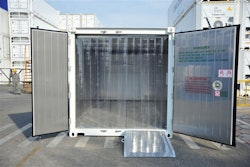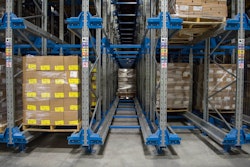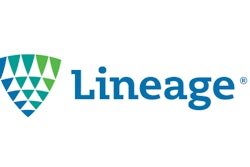
In order to do business profitably while also remaining compliant with the Food Safety Modernization Act (FSMA), companies must harness the power of real-time temperature tracking. Supply chain visibility allows logistics leaders to have more control over the transportation process and proactively avoid waste and recalls. By leveraging the latest technological advancements, carriers can meet increasingly complex regulations while also inspiring greater confidence among suppliers and consumers.
Transporting Temperature-Sensitive Goods: An Added Layer of Complexity
The rapid cold chain growth we’ve seen lately is driven by a growing need for temperature control of perishable food products, pharmaceuticals and chemicals. In cold chain shipping the price of failure is high, potentially ruining reputations, livelihoods and lives. The Center for Disease Control and Prevention estimates that 48 million people get sick, 128,000 are hospitalized and 3,000 die from foodborne diseases in the U.S. annually. The leading cause: improper handling of food during production, packaging, shipping, storage and preparation.
Companies in the food industry that do not automate refrigerated product tracking are taking on unnecessary risks. According to the CDC, nearly half of food-borne illnesses were linked to produce, with dairy following behind as a most frequent food source for infections.
Under most current shipping conditions, costs and time required to transport temperature-sensitive goods quickly add up. By improving food traceability, suppliers are better able to manage transportation of temperature-sensitive foods.
Temperature range issues are detected by customers when a load is delivered. If it doesn’t pass inspection, an entire shipment is rejected unless the shipper can prove that the load was transported continuously within the agreed-upon temperature threshold.
What if a driver could detect a temperature change in real-time and act on it immediately by adjusting temperature in transit or by diverting to the nearest cold storage facility? What if a shipper could proactively let a vendor know that a truck will be late for a pick up? The ability to receive important data in real-time and communicate status and ETA adjustments dynamically eliminates surprises. Increased visibility brought about by new technologies makes this flexibility possible.
The need for visibility is increasing. To date, most visibility has been backward looking. Real-time and end- to-end cold chain monitoring offers shippers a chance to change that.
The Automated Real-Time Visibility Revolution
Visibility has become mission-critical in shipping refrigerated products since missteps can easily lead to human-health impacts, legal issues and reputational damage. Companies shipping refrigerated products are now able to leverage disruptive automation technologies that make it possible to monitor the precise temperature, location and ETA of shipments. This significantly reduces risk, driving increased profitability through reduction of spoiled and diverted loads, eliminating reliance on single-use temperature data loggers.
Automated real-time visibility decreases risk for cold chain shippers while increasing the volume and quality of data. This creates clearer communication and makes prediction possible, thereby increasing shipping efficiencies and resulting in savings and improved customer service.


















